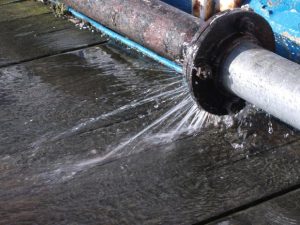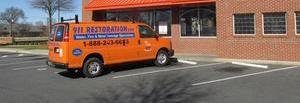Preparing for Cold Storms in Fayetteville
2018 has been off to a rough start for many in the East Coast. Last week a powerful storm brought in gusty winds and heavy rain, which caused many delays, closures and damages to homes and buildings.
 As temperatures begin to decline and moisture freezes, safety crews and the department of transportation are working harder to ensure all streets are safe as possible since moisture can freeze and lead to black ice.
As temperatures begin to decline and moisture freezes, safety crews and the department of transportation are working harder to ensure all streets are safe as possible since moisture can freeze and lead to black ice.
City officials have advised locals to stay indoors if they can, to avoid possible accidents. If you are staying in, your home should be secure and storm proof. Often times, a simple yet complete visual inspection can avoid damages and a high bill after a storm.
Here are a few tips to keep in mind before the storm hits and to stay safe:
- Inspect your roof, windows, and doors for any holes
- Inspect shingles, and make sure panels are secured and well attached
- Secure loose items in your front and/or backyard
- Keep sidewalls and vents cleared
- Keep thermostat at 68 degrees; try not to adjust it
- Unplug all major appliances
- Insulate or wrap pipes
- Stock up your emergency kit
High winds create a powerful upward force and since windows and doors are vulnerable to high winds, you want to be sure everything is secure and in place. On your roof, you should check for holes, cracks and broken frames, or detached panels. Keep this in mind for any loose items in your front and backyard. Tie loose items like your lawn furniture or grill or put them away in your garage.
Visually check the seals around your windows and doors to avoid cold air and debris from coming in. Seal holes and cracks with caulking, which can be purchased for less than $5 at any home improvement store. To further protect your windows, you can insulate them by simply putting plastic over the windows.
To avoid burst pipes, insulate pipes in unheated areas to prevent them from freezing. Burst pipes can lead to flooding inside your home. Keeping your pipes insulated is just as important as keeping the air inside your home consistent. Save energy and costs by keeping your thermostat at 68 degrees during the day and night.
Power outages are highly likely during a storm or blizzard, so be as prepared as possible. Keep your emergency kit nearby and be sure to include items such as:
1-2 flashlights
A portable generator
Extra batteries
First-aid kit
A multi-purpose tool
Three-day supply of water and food to last 3-5 people.
 All of these tips are important but keeping warm is one of the most important things to keep in mind. A water repellent coat would be ideal but if you can’t track one down, be sure to have the four most common items a warm jacket, gloves, a scarf, and hat.
All of these tips are important but keeping warm is one of the most important things to keep in mind. A water repellent coat would be ideal but if you can’t track one down, be sure to have the four most common items a warm jacket, gloves, a scarf, and hat.
Stay indoors as much as possible, especially at the peak of the storm or blizzard and listen to city official advisories.



Leave a Reply